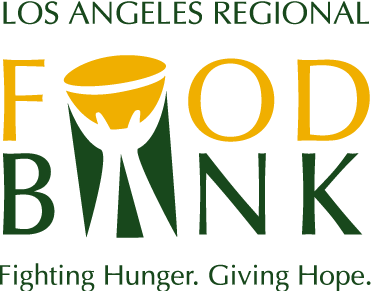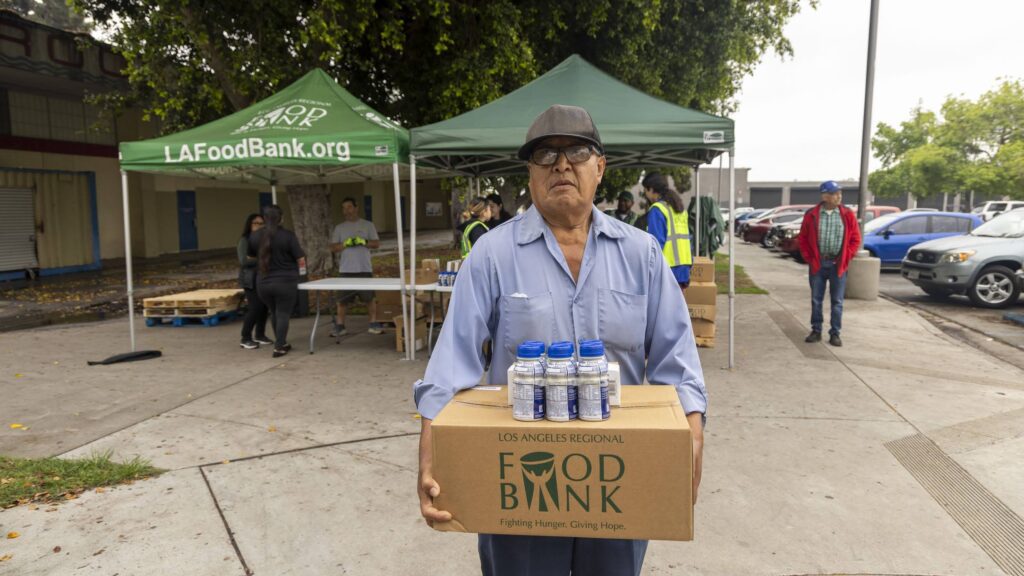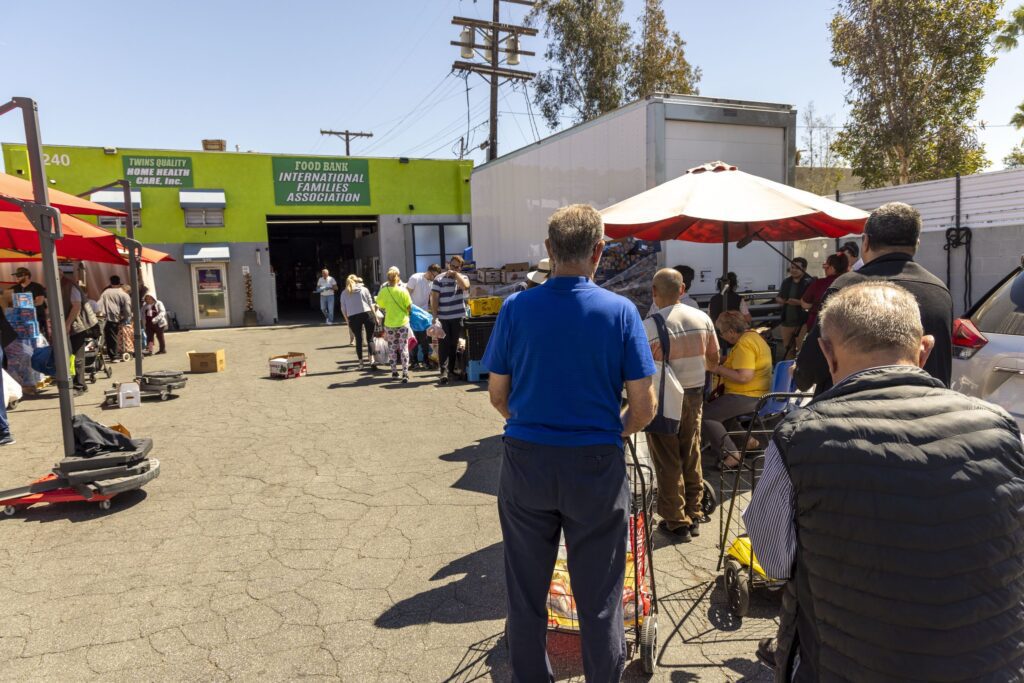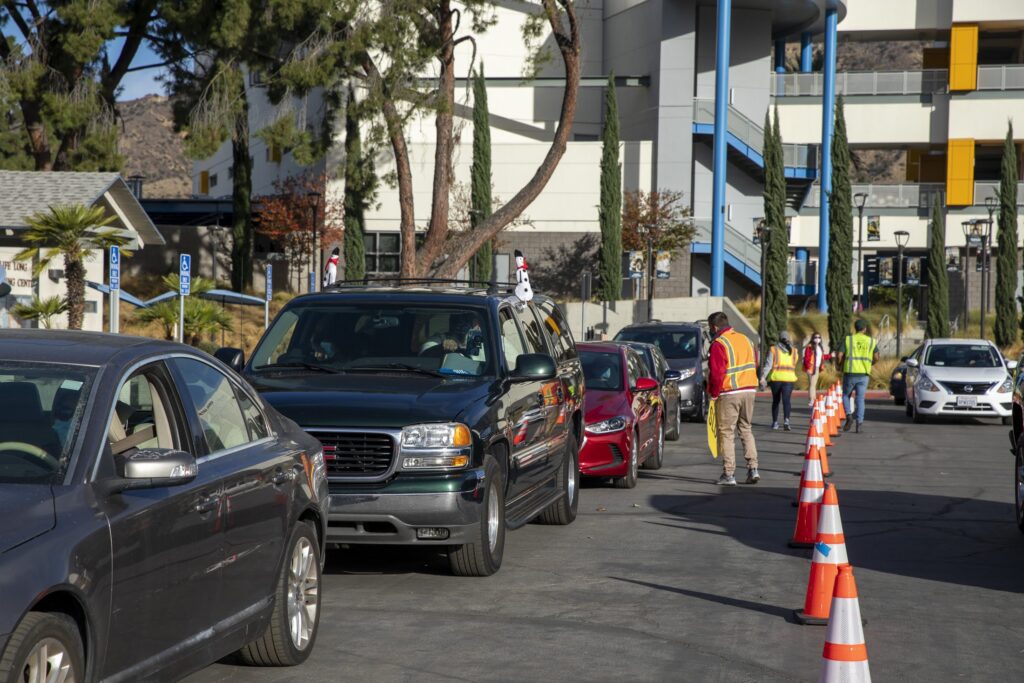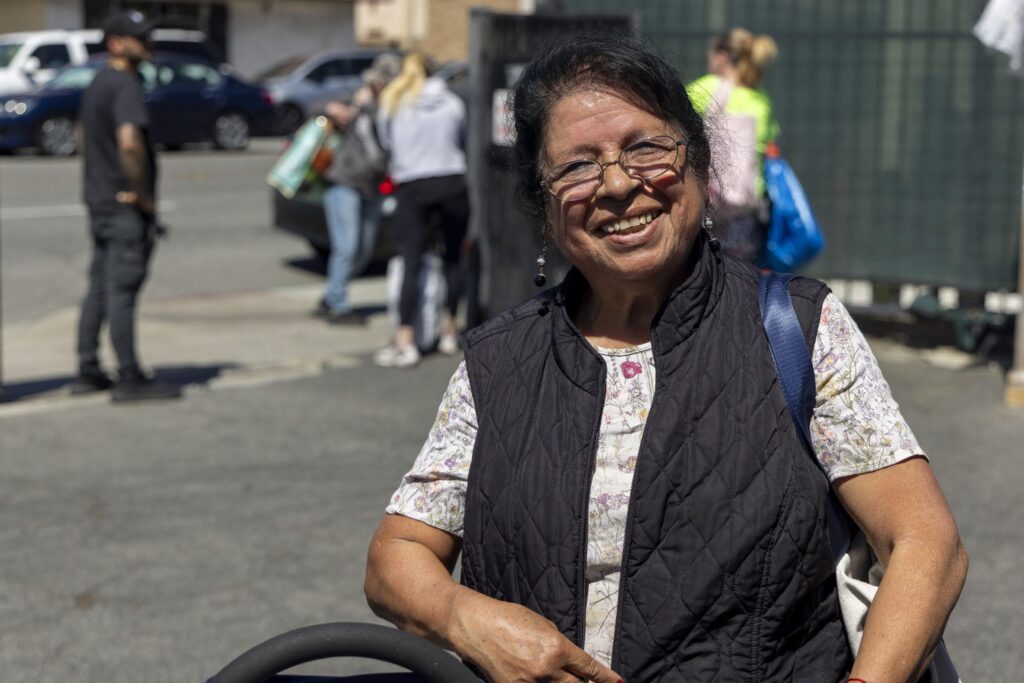What’s the Difference Between a Food Pantry and a Food Bank?
What’s the Difference Between a Food Pantry and a Food Bank?
Food Pantries and Food Banks Work Together to Reach Those in Need
Fighting hunger can be a complicated task with many moving parts, and it takes everyone to come together to address the need. Financial donors are necessary to fund this critical activity. Volunteers are needed to glean, package and distribute food. Truck drivers, forklift drivers, cleaning and sanitation crews, office workers and other professionals all play an essential role in the fight against hunger.
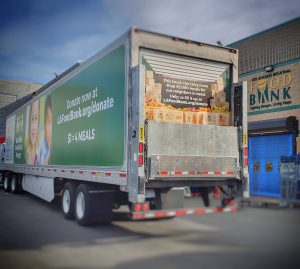
One of the most critical pieces in this highly collaborative effort is the partnership with food pantries. Most of the food and grocery product distributed via the Los Angeles Regional Food Bank, for example, is distributed through a network of food pantries, soup kitchens, shelters, religious organizations called the Partner Agency Network. This is true for most food banks in the USA.
Food Acquisition
Food banks like the Los Angeles Regional Food Bank acquire food from various sources, and food is generally donated by the truckload. Farmers, growers, wholesalers, distributors, grocery stores and many other similar organizations provide food and grocery product to those in need.
Food pantries generally receive the majority of their food from large food banks like the Los Angeles Regional Food Bank, and may also receive direct distributions from local grocery stores, canned food drives and the like.
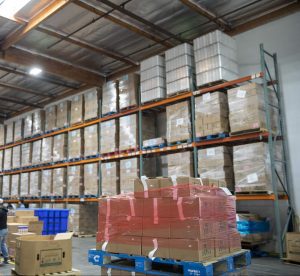
Operations
Walking into a Food bank is like walking into a wholesaler’s warehouse or a large warehouse such as Costco. Large racks of food are stacked from the floor to the ceiling, and forklifts move about the warehouse to safely organize donated food and food ready for pickup or delivery. Food banks carefully store millions of pounds of food, including fruits, vegetables, and other perishable items, as well as shelf-stable products, until they can be distributed in the community.
Food Banks generally have loading docks, sophisticated inventory control systems, massive walk-in cold and freezer rooms for fresh produce and other industrial features. While food bank warehouses are not generally set up for public distributions (although some do have food pantries in part of the building), they are set up for a few other critical things:
- Food donors can provide semi-trucks full of donated food items via loading docks
- Volunteers can sort and glean food for later distribution
- Fresh food can be safely stored in cold and freezer boxes
- Shelf-stable items can be easily stored on racks of food
- Partner Agencies can pick up food from the food bank directly, or in many cases, arrange for food to be delivered to their location.
- Food is inventoried, organized, and ready to deploy in case of a natural disaster or emergency.
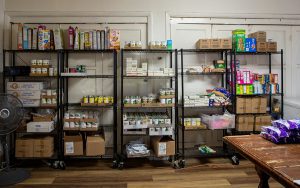
Food Pantries are generally smaller facilities that are designed to interface with food recipients. They are less industrial in feel and tend to resemble a kitchen or community pantry rather than a warehouse. These facilities are ideal for food distribution, whereas food banks are ideal for food storage and organization on a massive scale. Food Pantries provide food with dignity and compassion and often get to know the people they are helping. Many food recipients say that they love the thoughtfulness and care they receive from the staff and/or volunteers who are providing them with the healthy food they need.
In addition to providing food and grocery products, food banks like the LA Regional Food Bank provide support to local partners like equipment (such as refrigerators, palate jacks, etc.), volunteers and other forms of support.
Distribution
While food banks do engage in direct distribution to those in need, such as the large drive-thru distributions seen amid the pandemic, the majority of the food is actually provided with the help of these Partner Agencies. During a typical year, the LA Regional Food Bank processes about one million pounds of food each week through multiple warehouses, but amid the COVID-19 pandemic and related economic fallout, that number is closer to four million pounds per week.
As of April 2021, the Los Angeles Regional Food Bank delivers food and grocery items to 700 partner agencies across LA County. Since many Partner Agencies have limited storage capacity, the Food Bank relies on refrigerated trucks to transport fresh food, which allows for the rapid distribution of nutritious, perishable products.
The Food Bank also delivers essentials to those in need through direct distribution programs, such as the Mobile Food Pantry (MFP) program, initiated in 2012 to reach families in underserved communities. MFP trucks, loaded with pre-packed boxes of nutritious food, bring groceries to parking-lot locations across LA County. The ability to travel allows the MFP to provide perishable foods, including fresh fruits and vegetables, to those who need it most before products go to waste. During a typical year, the Mobile Food Pantry will visit roughly twenty sites across LA County and hold more than 175 distributions. Learn more about the Food Bank’s direct distribution programs >
The Los Angeles Regional Food Bank provides food and grocery products to food pantries based on local demand and Partner Agency orders. Food banks around the country work similarly with their partners so that they have the quantity and quality of food and grocery items they need to support their local communities.
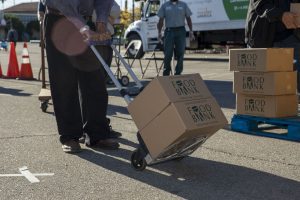
While food banks typically serve a broad region, food pantries are usually based in specific communities. For example, the Los Angeles Regional Food Bank provides food and grocery product to food pantries and to those in need throughout all of Los Angeles County, from the Antelope Valley to Long Beach, and everywhere in between. The 700 Partner Agencies are located throughout Los Angeles County, and because some agencies run multiple distribution sites, food is provided at over 900 sites throughout LA County.
Because food pantries tend to distribute food out of the same brick and mortar locations, they are more likely to accommodate walk-up distributions, even during the COVID-19 pandemic. They may also provide other services like shower facilities, clothing assistance and other basic needs assistance. While the LA Regional Food Bank had traditionally provided walk-up distribution via the Mobile Food Pantry program, these have shifted during the pandemic to drive-thru distributions to provide extra safety from the virus.
The LA Regional Food Bank could not reach nearly as many people without these Partner Agencies.
During COVID-19
Since the pandemic began in March 2020, the LA Regional Food Bank has shifted its MFP program to host drive-through distributions across LA County, maintaining social-distancing guidelines. Additionally, it has expanded its partner network to reach more families and individuals in need.
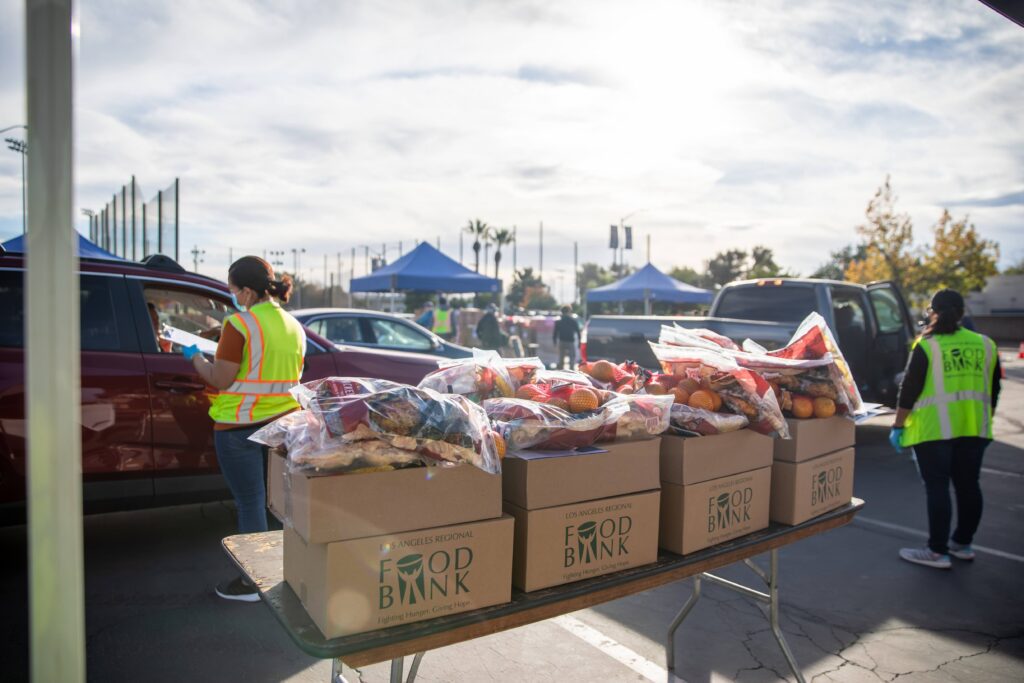
In 2019, the LA Regional Food Bank collaborated with 600 Partner Agencies distributing at 765 sites, serving 300,000 clients each month; now, the Food Bank works with 700 Partner Agencies to provide food resources at almost 1,000 different locations in the broader community, reaching more than 900,000 neighbors per month.
Overall, during 2020, the Food Bank distributed 174.6 million pounds of food through partner agencies and drive-through distributions, an increase from 81.8 million pounds of food during 2019. Additionally, 92% of the food distributed ranked as nutritious.
The high demand for food assistance, sparked by the pandemic and related economic fallout, continues to affect LA County.
Food pantries, soup kitchens, missions and other Partner Agencies have also seen a dramatic increase in the number of people seeking food assistance. Some food pantries, such as Immanuel Presbyterian, have more than quadrupled the number of weekly distributions they provide. Many Partner Agencies report double – or more – the number of people seeking assistance – many for the first time.
Please dial 211 or visit LAFoodbank.org/findfood to locate a Partner Agency near you to seek food assistance.
The Los Angeles Regional Food Bank is so grateful for the steadfast support of donors and volunteers that have allowed the Food Bank to expand its reach and help the rising number of families and individuals facing food insecurity. Our work wouldn’t be possible without the strength and support of our community. Please make a financial contribution as we continue to fight hunger in LA County.
A Closer Look at Our Partner Agencies:

